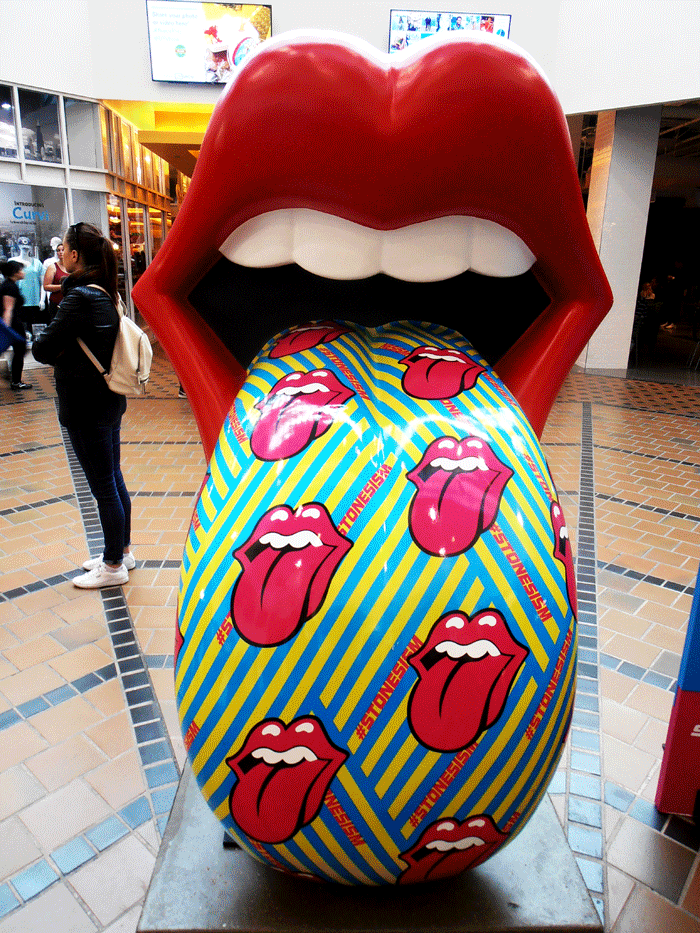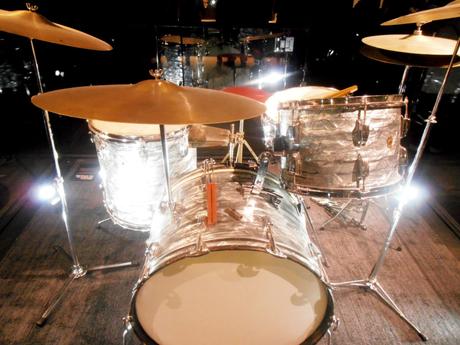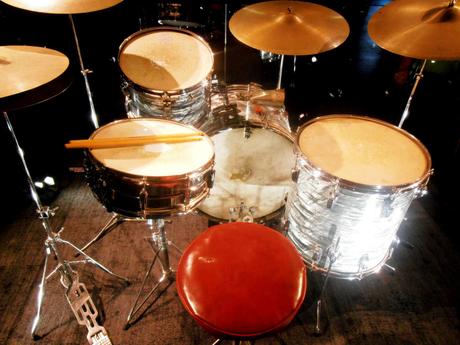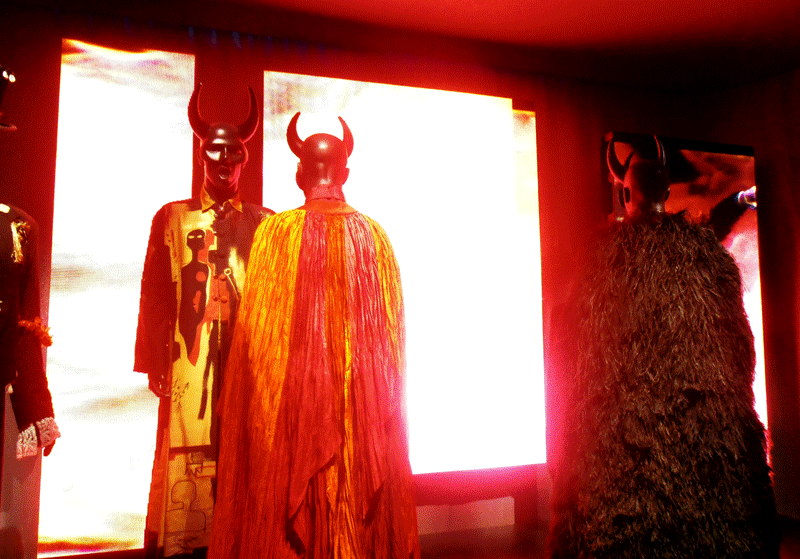
To get to the Rolling Stones’ traveling career retrospective, Exhibitionism, you have to follow the path of many tongues through Chicago’s Navy Pier. Just when you begin feeling lost the band’s iconic tongue logo appears in three-dimensional plaster cast glory standing five feet tall and directs you further still. After tongue number five it becomes like walking down some long backstage corridor at a Stones stadium concert.
Exhibitionism opened in Chicago this past April and will run until July 30. London had it in 2016 and Australia will have it in 2018. It is a dizzying walk through the history of rock and roll’s greatest act, making a path to each of their formidable excesses.
The museum opens, humbly, into a recreation of the group’s early 1962 Edith Grove apartment (see: flat) in West London where rock and roll grew like fungus on the wall. The details are nearly exact right down to the scattered 45s and show fliers. Standing in the middle it’s easy to imagine Keith sitting on the long, thin couch strumming Chuck Berry on the guitar and putting out cigarettes.
Going forward, the focus turns to the tools of the trade. Numerous guitars are displayed — used by Richards, Ron Wood, Brian Jones, Mick Taylor, Darryl Jones — but the coolest instrument, by far, is Charlie’s sky-blue Ludwig Pearl used from 1965-68. The set that would’ve traveled with the group as they shot to fame sits behind a short wall of glass. I could almost reach out and start a beat. It was like seeing an ancient tool used by the Aztecs or a headdress worn by the Aborigines.
Surrounding Watts’ set was a recreated studio of various instruments used throughout the 60s and 70s including Glyn Johns’ mixing board, Bobby Keys’ sax and Richards’ 1969 Ampeg Dan Armstrong guitar made with plexiglas.


The place was just littered with Stones memorabilia: teenage diary entries, original lyric sheets, master copies, sternly written censorship requests for the lyrics to “Some Girls,” miniature recreations of their gigantic stadium shows. An interactive mixing board allowed you to put on headphones and remix a databank of songs. “Miss You,” with just Wyman’s bass turned up and Mick spitting all over the mic, is slimy desperation and releases chills.
Andy Warhol, who lurks in the background of Stones history, had representation in a section dedicated to album art–one of the more fascinating areas of the museum. Warhol’s crotch-shot Polaroids for the cover of Sticky Fingers, as well as variations of Love You Live, were displayed. The evolution of their always alluring albums covers laid out under glass.

Exhibitionism definitely calls for hardcore Stones fans–of which there are many. The casual fan, if they even exist, might start to get bored by the time the fashion show and the stage recreations come around. The full production leaves you with a sense of the Rolling Stones’ astounding history and how they’ve not only created music’s most recognizable body of work, but also took every aspect of the industry to its absolute limit. Who else, but the Stones, could bank on millions for blown-out world tour spectacles decade after decade and still maintain their integrity? Their influence reaches far and wide and forever on the world will be licked by the tongue of rock and roll.
Independent Music Promotions’ (www.independentmusicpromotions.com) revolutionary music PR campaigns are the most effective in the industry. Submit your music to us today.

